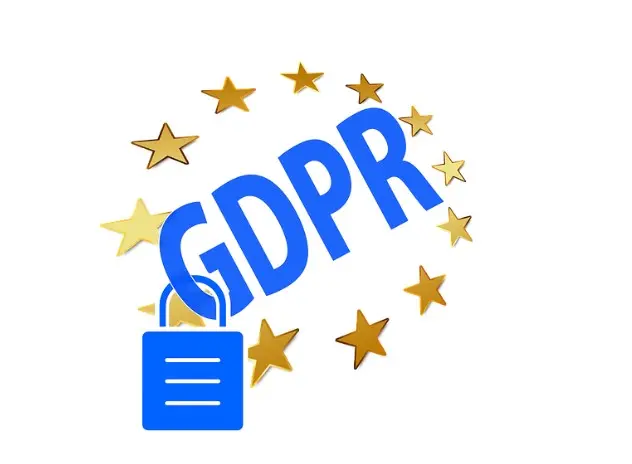Privacy has become a paramount concern in today’s digital age, where information is freely exchanged, and transactions are increasingly conducted online. Individuals value their personal information and want to ensure it is protected. This is where privacy notices come into play.

Understanding the Basics of Privacy Notice
Before diving into the intricacies of privacy notices, it is important to first understand what they actually are. A privacy notice, also known as a privacy policy or statement, is a legal document that outlines how an organization collects, uses, and protects personal information. But what exactly does this mean for you as an individual?
When you visit a website, sign up for a service, or make a purchase online, you often provide personal information such as your name, address, email, and even payment details. This information is valuable and needs to be handled responsibly.
Privacy notices serve as a guide, informing you about how your personal information will be used, who will have access to it, and how it will be protected.
The Importance of Privacy Notices
Privacy notices play a crucial role in safeguarding your information and ensuring transparency between you and the organizations that handle your data. By providing you with relevant information, privacy notices empower you to make informed decisions about sharing your personal details.
Imagine if you were browsing an online store and came across a privacy notice that was vague or non-existent. How would you feel about providing your credit card information to that website? Probably not very comfortable, right? Privacy notices give you peace of mind by assuring you that your personal information will be handled ethically and responsibly. They give you the opportunity to assess the risks involved in sharing your data and make an informed choice.
Moreover, privacy notices are a legal requirement and a sign of an organization’s commitment to protecting your privacy. They demonstrate that the organization values your trust and takes the necessary steps to protect your personal information. By being transparent about their data practices, organizations build trust with their customers and foster positive relationships. This trust is crucial in an age where data breaches and privacy concerns are becoming more prevalent.
So, the next time you come across a privacy notice, take a moment to read it carefully. It may seem like a mundane legal document, but it holds the key to understanding how your personal information will be handled and protected.
The Legal Framework Surrounding Privacy Notices
Privacy notices are not only a best practice but are often a legal requirement for organizations handling personal data. Various laws and regulations govern the use of privacy notices, with the General Data Protection Regulation (GDPR) being one of the most significant.
Privacy notices play a crucial role in ensuring transparency and accountability in handling personal data. They serve as a means for organizations to communicate with individuals about how their personal information is collected, used, and protected.
General Data Protection Regulation (GDPR) and Privacy Notices
Under the GDPR, organizations are required to provide detailed privacy notices that inform individuals about the purpose of data collection, the lawful basis for processing, data retention periods, and individuals’ rights. This regulation ensures a higher level of privacy protection for individuals residing in European Union member states.
The GDPR sets a high standard for privacy notices, emphasizing the need for clear and concise information that is easily accessible to individuals. Organizations must provide privacy notices in a format that is easy to understand, using plain language and avoiding technical jargon.
Furthermore, the GDPR mandates that privacy notices be provided at the time of data collection, ensuring individuals are fully informed before they provide their personal information. This requirement promotes transparency and empowers individuals to make informed decisions about the use of their data.

Other Relevant Laws and Regulations
In addition to the GDPR, there are numerous other laws and regulations that govern privacy notices around the world. Examples include the California Consumer Privacy Act (CCPA), the Health Insurance Portability and Accountability Act (HIPAA), and the Personal Information Protection and Electronic Documents Act (PIPEDA) in Canada.
The CCPA, which came into effect on January 1, 2020, grants California residents certain rights regarding their personal information, such as the right to know what data is being collected and the right to opt out of the sale of their data. Organizations subject to the CCPA must provide clear and comprehensive privacy notices that comply with the requirements of the law.
HIPAA, on the other hand, applies to the healthcare industry in the United States. It requires healthcare providers and organizations to inform individuals about how their protected health information is used and disclosed. Privacy notices under HIPAA must include information about individuals’ rights, such as the right to access their medical records and the right to request corrections.
In Canada, PIPEDA governs private sector organizations’ collection, use, and disclosure of personal information. Organizations subject to PIPEDA must provide individuals with clear and meaningful privacy notices that outline their personal information handling practices. These notices must include information about individuals’ rights, such as the right to withdraw consent and the right to access their personal information.
Overall, the legal framework surrounding privacy notices is complex and varies across jurisdictions. Organizations must stay up to date with the relevant laws and regulations to ensure their privacy notices comply with the requirements and provide individuals with the necessary information to make informed decisions about their personal data.
Components of a Privacy Notice
When it comes to privacy notices, it is crucial to provide individuals with comprehensive and transparent information about how their personal data is handled. Privacy notices serve as a means of building trust and ensuring that individuals are aware of their rights and choices.
Information Collection and Usage
A well-crafted privacy notice will explain what types of information are collected, such as names, addresses, email addresses, and payment details. However, it is important to delve further into this aspect to provide individuals with a deeper understanding of how their data is collected and used.
For instance, the notice could detail the specific purposes for collecting the information. It could mention that names and addresses are collected for order processing, ensuring that products are delivered to the right location. Email addresses might be collected to provide customer support and keep individuals informed about their orders. Payment details could be collected to facilitate secure and efficient transactions. By providing these additional details, individuals can gain a clearer picture of how their information is utilized, which can help foster trust and confidence in the organization.
Data Sharing and Disclosure
Privacy notices should not only disclose whether or not personal data is shared with external parties, such as service providers or third-party advertisers, but they should also provide more information on the circumstances under which data may be disclosed.
For example, the notice could explain that personal data may be shared with trusted service providers who assist in delivering products or services. It could also clarify that in the event of a merger or acquisition, personal data may be transferred to the new entity, ensuring continuity of service.
Furthermore, it is essential to outline any safeguards in place to protect an individual’s personal data when it is shared with external parties. This could include mentioning the use of data processing agreements or contractual obligations to ensure that the data is handled securely and in accordance with applicable laws and regulations.
User Rights and Choices
Individuals have various rights when it comes to their personal information, and a privacy notice should outline these rights in a clear and accessible manner. In addition to the right to access, rectify, or delete personal data, the notice could also mention other rights that individuals may have, such as the right to restrict or object to the processing of their data. This empowers individuals to have control over their personal information and make informed decisions about how it is used.
Moreover, the privacy notice should inform individuals about their marketing communications choices. It could explain how individuals can opt out of receiving promotional emails or newsletters, allowing them to manage their preferences and control the information they receive. By including these details in the privacy notice, individuals can be better informed about their rights and choices, ultimately fostering a sense of transparency and trust between the organization and its users.
How Privacy Notices Protect You
Privacy notices are not just bureaucratic legal documents; they directly benefit individuals by ensuring transparency and protecting personal information.
Ensuring Transparency and Control
By clearly explaining how your data will be used and giving you choices about its collection and usage, privacy notices empower you to make informed decisions. This transparency helps build trust between you and the organizations you interact with.
Protecting Your Personal Information
Privacy notices aim to safeguard your personal information from unauthorized access, use, or disclosure. They outline the security measures implemented by organizations to protect data integrity and prevent data breaches.
How to Read and Understand a Privacy Notice
Privacy notices can be lengthy and filled with legal jargon, making them challenging to read and comprehend. However, with a little guidance, you can navigate through them effectively.
Key Points to Look For
When reading a privacy notice, focus on the sections that outline what information is collected, how it will be used, and with whom it will be shared. Additionally, pay attention to your rights and the choices you have regarding your data.
Understanding Legal Jargon
Legal terminology can be confusing, but it is important to understand the basic terms commonly found in privacy notices. Take the time to familiarize yourself with concepts such as data controller, data processor, consent, and legitimate interests to better grasp how your data is handled.
In conclusion, privacy notices are vital tools that protect your information, promote transparency, and empower you as an individual. By understanding the basics of privacy notices, the legal framework surrounding them, and how to read them effectively, you can take control of your personal data and safeguard your privacy in today’s digital world. The staff at PPGS ™ is on a mission to simplify privacy notices for the average consumer. Explore the website to learn more.
